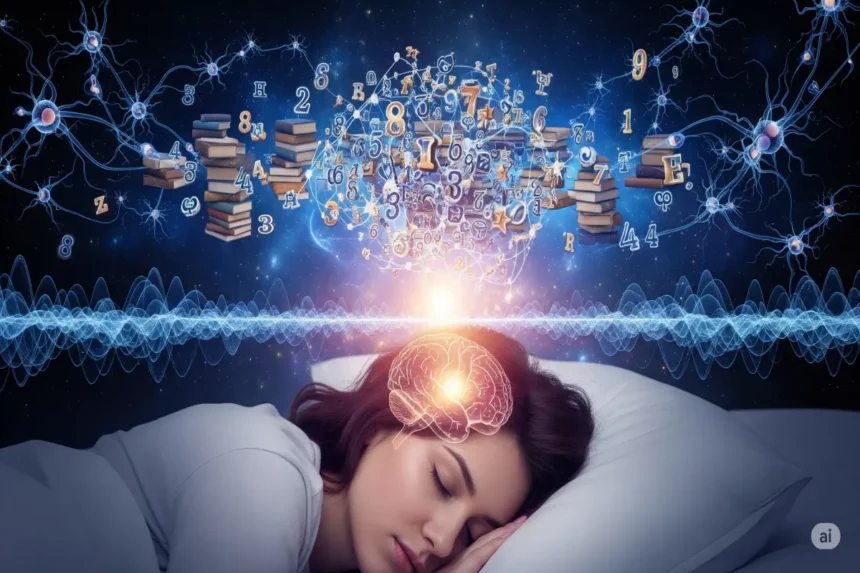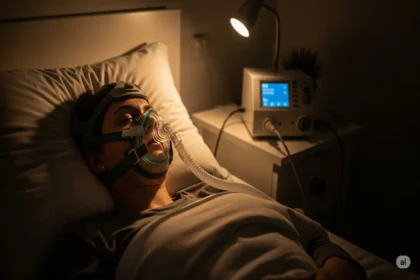For centuries, the act of slumber was often seen as a passive state, a necessary pause for the body to recharge. Yet, beneath the calm surface of a sleeping mind, a quiet revolution is taking place, revealing the profound connection between Sleep & Memory. Far from being inert, your brain is working tirelessly, meticulously sorting, filing, and strengthening the day’s experiences, transforming fleeting moments into lasting memories. This profound connection between sleep and memory consolidation is one of the most fascinating discoveries in modern neuroscience, revealing sleep not as an interruption to learning, but as its indispensable partner.
Imagine a student, Sarah, cramming late into the night for a history exam. She feels the pressure to absorb every date, every name, every battle. She pulls an all-nighter, convinced that every waking moment spent with her textbooks is an advantage. But when she sits for the exam, she finds her mind strangely blank, the facts elusive, the connections hazy. In contrast, her classmate, Ben, studied diligently for a few hours, then made sure to get a full eight hours of sleep. The next morning, Ben feels refreshed, and the information seems to flow effortlessly from his mind onto the page. This isn’t just about feeling rested; it’s about the profound, invisible work his brain performed while he snoozed, solidifying what he had learned.
The intricate dance between sleep and memory is a testament to the brain’s remarkable efficiency. It’s a process far more sophisticated than simply hitting a “save” button. Instead, it involves a complex interplay of neural activity, rhythmic brainwaves, and molecular changes that actively reprocess and integrate new information.
The Brain’s Night Shift: A Symphony of Sleep Stages
To truly appreciate how sleep solidifies learning, we must first understand the different stages of sleep and their unique contributions. Our nocturnal journey is divided into cycles, each lasting roughly 90 minutes, comprising Non-Rapid Eye Movement (NREM) sleep and Rapid Eye Movement (REM) sleep.
NREM Sleep: The Foundation of Memory
NREM sleep is further broken down into three stages, each playing a critical role in memory consolidation:
REM Sleep: The Creative Integrator
Following NREM, we enter REM sleep, characterized by rapid eye movements, vivid dreaming, and increased brain activity. While NREM is crucial for declarative memories, REM sleep is particularly vital for:
The Mechanisms of Memory Consolidation
The journey of a memory from a fleeting experience to a stable, long-term recollection is a fascinating multi-step process, with sleep acting as the crucial architect.
- Encoding (Wakefulness): When you learn something new, your brain initially encodes this information, forming a temporary trace, primarily in the hippocampus. This is like writing notes on a scratchpad.
- Consolidation (Sleep): This is where sleep works its magic. During NREM sleep, especially SWS, the hippocampus “replays” the day’s events and newly acquired information. This replay is not just a passive recall; it’s an active process of transferring these fragile memories to the neocortex for more permanent storage. Think of it as transferring notes from a scratchpad to a well-organized, durable filing cabinet. This transfer strengthens the neural connections (synapses) associated with that memory, making it more robust and less susceptible to interference.
- Integration (REM Sleep): As the brain cycles into REM sleep, these newly consolidated memories are further integrated with existing knowledge and experiences. This is where the brain might find novel connections, generalize learned rules, or even prune unnecessary details, making the memory more efficient and accessible. This process contributes to our ability to apply learned information in new contexts and to think creatively.
A study published in Nature Neuroscience demonstrated this “replay” phenomenon, showing that neurons in the hippocampus and neocortex fire in synchronized patterns during sleep, mirroring the patterns observed during waking learning. This neural dialogue is fundamental to how memories become entrenched.
Real-World Implications: From Students to Athletes
The scientific understanding of sleep’s role in memory has profound implications for various aspects of life:
The Cost of Sleep Deprivation
Conversely, chronic sleep deprivation severely hampers memory formation and recall. When you don’t get enough sleep, your hippocampus struggles to encode new information effectively, making it harder to learn. The crucial replay and transfer processes during NREM and REM sleep are disrupted, leading to fragile, easily forgotten memories. This is why feeling “brain fog” after a sleepless night is a common experience. It’s not just fatigue; it’s your brain’s memory machinery sputtering.
Long-term, insufficient sleep has even been linked to an increased risk of cognitive decline and neurodegenerative diseases like Alzheimer’s. During deep sleep, the brain’s glymphatic system actively clears metabolic waste products, including amyloid-beta proteins, which are implicated in Alzheimer’s disease. Impaired sleep can hinder this crucial “brain wash” process, allowing harmful proteins to accumulate.
Conclusion: Embrace the Power of Rest
The evidence is overwhelming: sleep is not a luxury, but a non-negotiable biological requirement for robust memory and optimal brain function. It is during those quiet hours of slumber that your brain transforms raw data into meaningful knowledge, strengthens skills, and weaves the tapestry of your life’s experiences into a coherent narrative.
So, the next time you’re faced with a challenging learning task, a complex problem, or simply want to ensure you remember the precious moments of your day, remember the profound power of sleep. It’s an investment in your cognitive health, your learning capacity, and your overall well-being. Embrace the quiet magic of the night, knowing that while you rest, your brain is diligently working, solidifying your learning and preparing you for a brighter, sharper tomorrow.
Disclaimer: The information provided in this article is for general informational purposes only and does not constitute medical advice. It is not a substitute for professional medical advice, diagnosis, or treatment. Always seek the advice of your physician or other qualified health provider with any questions you may have regarding a medical condition. Never disregard professional medical advice or delay in seeking it because of something you have read on this website.














